Class 4 Science - Digestive System - CBSE Worksheets Solutions - 1
Q1: Give one word for the following.
(i) The part of the digestive system where digestion begins.
Ans: Mouth
The digestive process starts in your mouth when you chew.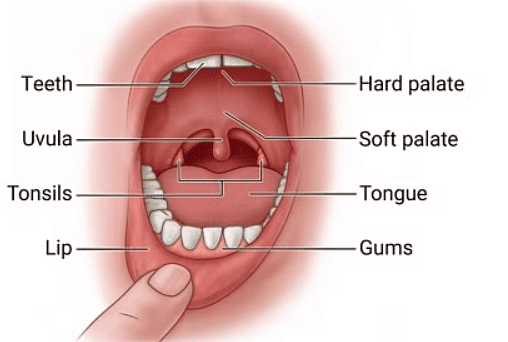
(ii) The outer most layer of the tooth.
Ans: Enamel
A tooth has three layers. The hard outer layer is called enamel. The middle layer is called dentin.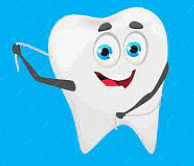
(iii) The first set of teeth a child gets.
Ans: Milk teeth
Most kids have their first set of teeth by the time they are 3 years old. These are called the primary teeth, baby teeth, or milk teeth.
(iv) The inner most part of the tooth with nerve endings.
Ans: Pulp
Dentin protects the innermost part of the tooth, called the pulp. The pulp is where each tooth's nerve endings and blood supply are found.
Q2: Choose the correct option.
(i) The undigested food is passed to ______________ where most of the water is absorbed back from the food before being passed to the rectum.
(a) small intestine
(b) large intestine
(c) anus
(d) stomach
Ans: (b)
After food passes through the small intestine, the undigested food material enters the large intestine, where most of the water is reabsorbed. Recall that the large intestine is also home to the microflora called “intestinal flora” that aid in the digestion process.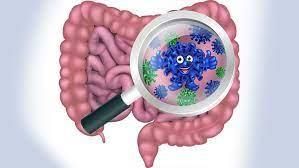
(ii) Part of the teeth that is visible and not covered by the gum.
(a) Dentine
(b) Crown
(c) Pulp
(d) Root
Ans: (b)
The enamel is the thin hard layer that protects the visible part of the tooth (crown). It is translucent due to its mineral composition and is responsible for giving the tooth its shiny appearance.
(iii) Number of milk teeth that a child has are
(a) 22
(b) 20
(c) 28
(d) 30
Ans: (b)
Most children have a full set of 20 milk or baby teeth by the time they're 3 years old.
(iv) Teeth used for tearing food are
(a) premolars
(b) molars
(c) canines
(d) incisors
Ans: (c)
Canines are used for ripping and tearing food such as meat.
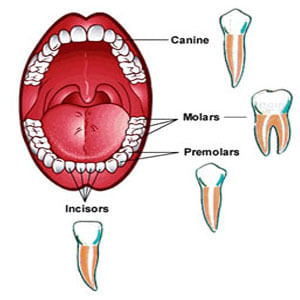
Q3: Fill in the blanks.
(i) ______ present in the mouth makes the food soft and turns it sweet.
Ans: Saliva
Saliva makes it easier to chew and swallow foods (especially dry foods), and contains enzymes that help begin the digestion of foods. Once food is a soft, moist mass, it's pushed to the back of the mouth and the throat to be swallowed.
(ii) In the small intestine, ______ from liver and pancreatic juice from pancreas are added to the food to digest it completely. 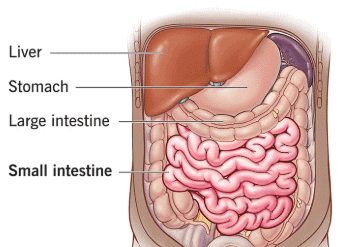
Ans: digestive juices
The muscles of the small intestine mix food with digestive juices from the pancreas, liver, and intestine, and push the mixture forward for further digestion. The walls of the small intestine absorb water and the digested nutrients into your bloodstream.
(iii) From the mouth, the food gets swallowed into a pipe also known as ______.
Ans: Food Pipe
The food is taken into the body through the mouth and the process is known as ingestion. The food is swallowed and passed to the oesophagus (food pipe) which is then pushed down to the stomach by movement of the wall of the food pipe.
(iv) ______ protects the innermost part of the tooth called the pulp. 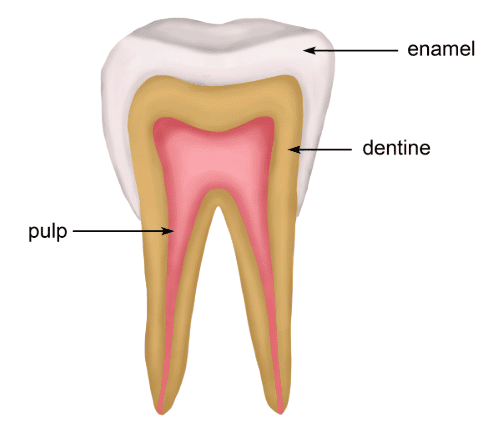 Ans: Dentine
Ans: Dentine
Dentin protects the innermost part of the tooth, called the pulp. The pulp is where each tooth's nerve endings and blood supply are found.
Q4: True & False.
(i) Saliva in the mouth converts starch in the food to sugar.
Ans: True
Saliva makes it easier to chew and swallow foods (especially dry foods), and contains enzymes that help begin the digestion of foods. Once food is a soft, moist mass, it's pushed to the back of the mouth and the throat to be swallowed.
(ii) Molars are the toughest among all types of teeth. 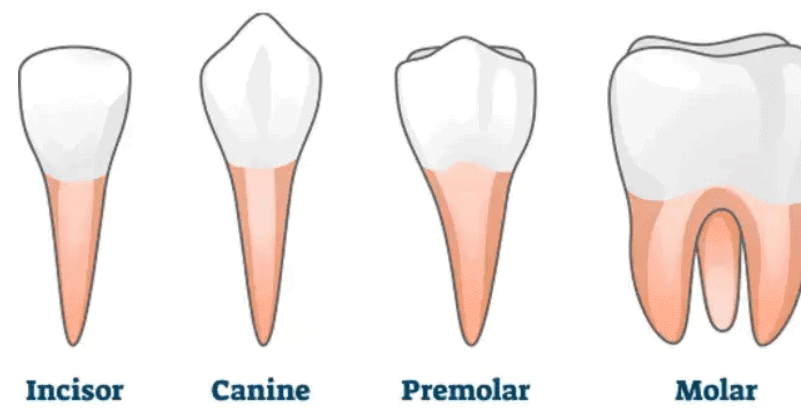
Ans: True
Molars are the toughest of the teeth. They are wider and stronger than premolars, and they have more ridges.
(iii) Milk is essential for strong and healthy teeth.
Ans: True
Drinking milk makes your teeth stronger and protects tooth enamel.
(iv) Liver takes the food to the stomach. 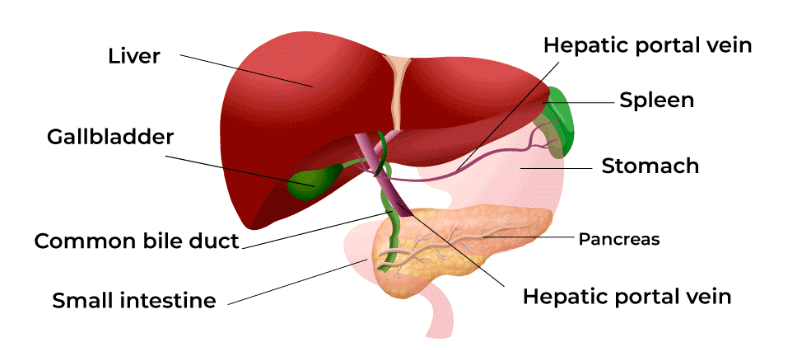
Ans: False
Anything that is eaten or consumed, whether it's food, alcohol, medicine or toxins, gets filtered by the liver. Once we ingest food, it is digested by the stomach and intestine, gets absorbed into the blood and goes to the liver.
(v) Babies are born with permanent teeth.
Ans: False
Babies are usually born with 20 baby teeth (also known as primary teeth).
Q5: Match the teeth with its correct name and action.
Ans:
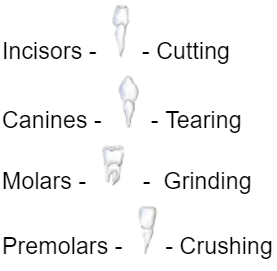
Q6: Answer the following questions in brief.
(i) What is digestion? List the organs of the digestive system.
Ans: Digestion is the complex process of turning the food you eat into nutrients, which the body uses for energy, growth and cell repair needed to survive.
The digestive system includes the mouth, pharynx (throat), esophagus, stomach, small intestine, large intestine, rectum, and anus. It also includes the salivary glands, liver, gallbladder, and pancreas, which make digestive juices and enzymes that help the body digest food and liquids.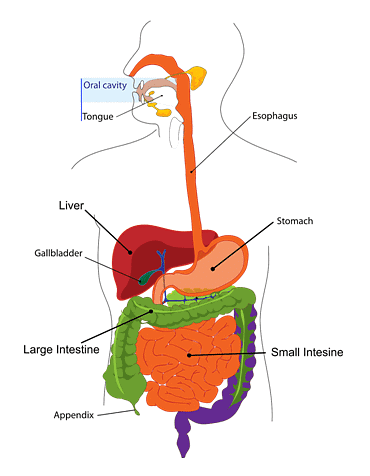
(ii) List some healthy eating habits.
Ans:
- Eat a variety of fruits (2 or more servings a day).
- Eat whole-grain, high-fiber breads and cereals (3 to 6 servings a day).
- Reduce or eliminate refined or processed carbohydrates; most of the grains in your diet should be whole grains.
- Drink fat-free or low-fat milk and eat low-fat dairy products.
(iii) What is the role of the small intestine in digesting food?
Ans: The small intestine is the part of the intestines where 90% of the digestion and absorption of food occurs, the other 10% taking place in the stomach and large intestine. The main function of the small intestine is absorption of nutrients and minerals from food.
(iv) List any three ways by which we can keep our teeth healthy and sparkling.
Ans:
- Eat calcium-rich foods.
- Drink water instead of soda or juice.
- Brush regularly
- Avoid foods and drinks that stain enamel.
- Don't forget about the rest of your mouth.
(v) Name the four types of teeth.
Ans: 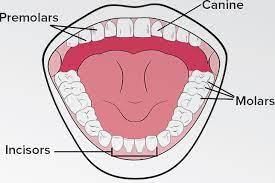 The four types of teeth are:
The four types of teeth are:
- Incisors: Your incisors are eight teeth in the front center of your mouth (four on both bottom and top).
- Canines: Your canines are the next teeth that develop in your mouth.
- Premolars: Premolars are used for tearing and crushing food. ...
- Molars: Your molars are your largest teeth.
Q7: Answer the following questions in detail.
(i) Explain different parts of tooth in humans.
Ans: 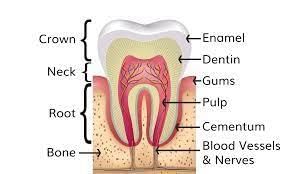 Parts of Tooth:
Parts of Tooth:
- Enamel: Enamel is the hard calcified tissue on the surface of your teeth. It protects the dentin from acid and plaque.
- Dentin: Dentin is a sensitive layer of living tissue that communicates with the nerves in your teeth.
- Cementum: Cementum is a hard connective tissue that covers tooth roots.
- Pulp: Pulp is the non-calcified tissue at the center of the tooth that contains nerves, connective tissue, and blood vessels. Your teeth receive nourishment from the pulp.
(ii) Describe the process of digestion that takes place in the stomach.
Ans: In the stomach, digestion involves both mechanical and chemical processes:
Mixing and Churning: The stomach's strong muscles churn and mix the food, breaking it into smaller pieces and turning it into a semi-liquid paste called chyme.
Chemical Digestion: The stomach releases gastric juices, which include:
Hydrochloric Acid: This makes the stomach acidic, killing germs in the food and helping to break down food particles.
Pepsin: An enzyme that starts digesting proteins, breaking them into smaller pieces.
Mucus: Protects the stomach lining from being harmed by the acid.
Storage and Release: The stomach stores the chyme and slowly releases it into the small intestine for further digestion.
This process prepares the food for complete digestion in the small intestine.
(iii) Label the following parts of the tooth. Draw the same diagram on your own.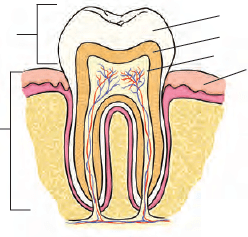 Ans:
Ans:
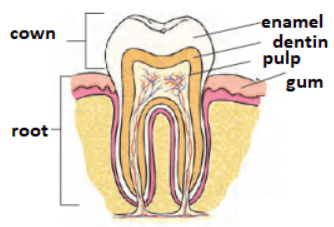
|
49 videos|253 docs|34 tests
|
FAQs on Class 4 Science - Digestive System - CBSE Worksheets Solutions - 1
| 1. What are the main organs involved in the digestive system? |  |
| 2. How does the digestive process begin? |  |
| 3. What role does the stomach play in digestion? |  |
| 4. How do nutrients get absorbed in the digestive system? |  |
| 5. What can affect the health of the digestive system? |  |

















